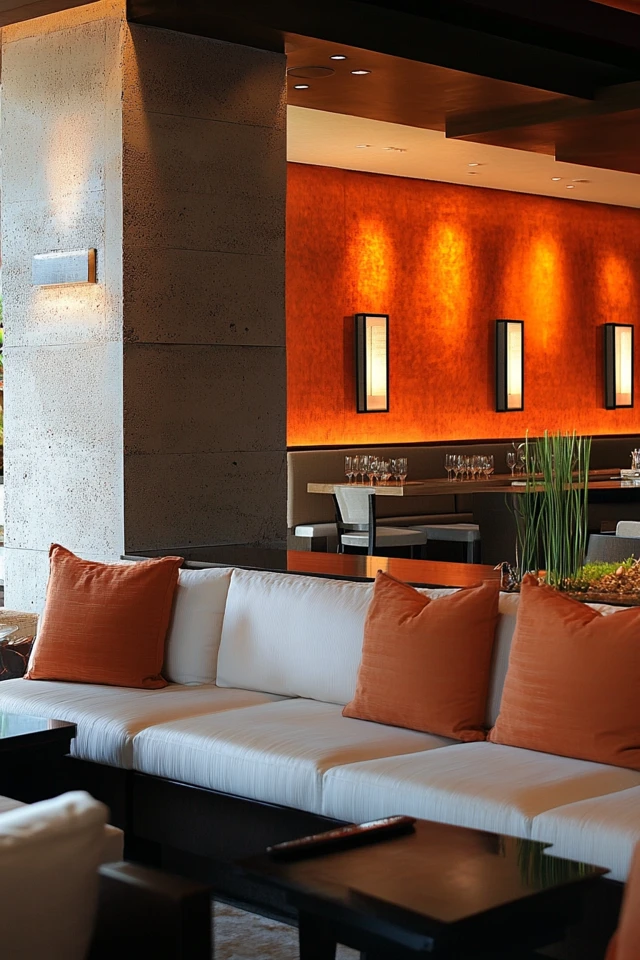Introduction
Lighting is one of the most transformative elements of interior design. It not only shapes how a space looks but also impacts how it feels and functions. Yet, too often, lighting is treated as an afterthought, with a single overhead fixture being the default solution. This can leave a room feeling flat, overly bright, or dim and uninviting. The solution? Layered lighting, a design approach that combines multiple light sources to create a balanced, dynamic, and functional environment.
I discovered the power of layered lighting while redesigning my dining area. Initially, I relied on a single chandelier, which left certain corners dark while creating harsh shadows on the table. By adding a pair of wall sconces and a dimmable table lamp, the space was completely transformed. The chandelier became a statement piece, the sconces added a warm, ambient glow, and the table lamp brought a touch of coziness. The room became more versatile—bright and inviting for dinners and soft and intimate for relaxed evenings.
In this guide, we’ll explore how to curate layered lighting that blends style and function seamlessly. Whether you’re designing a living room, bedroom, or kitchen, layering light will help you create a space that’s not only visually stunning but also perfectly suited to your needs.
The Perfect Design for You
Layered lighting is ideal for anyone who:
- Feels their current lighting is too harsh, too dim, or doesn’t highlight the room’s best features.
- Wants to create a warm, inviting atmosphere that adapts to different moods and occasions.
- Appreciates the role of lighting as both a functional and decorative element.
- Is designing or updating a space with a focus on versatility, comfort, and style.
Imagine a living room with an elegant chandelier for general illumination, floor lamps for cozy corners, and accent lighting to highlight art or architectural features. Or picture a kitchen with pendant lights above the island, under-cabinet lighting for tasks, and recessed lights for overall brightness. Layered lighting transforms spaces like these, making them more functional, atmospheric, and beautiful.
Whether you’re working with a minimalist aesthetic or a bold, eclectic design, layered lighting can elevate your interiors, ensuring every corner is perfectly lit and thoughtfully styled.
Picture Gallery
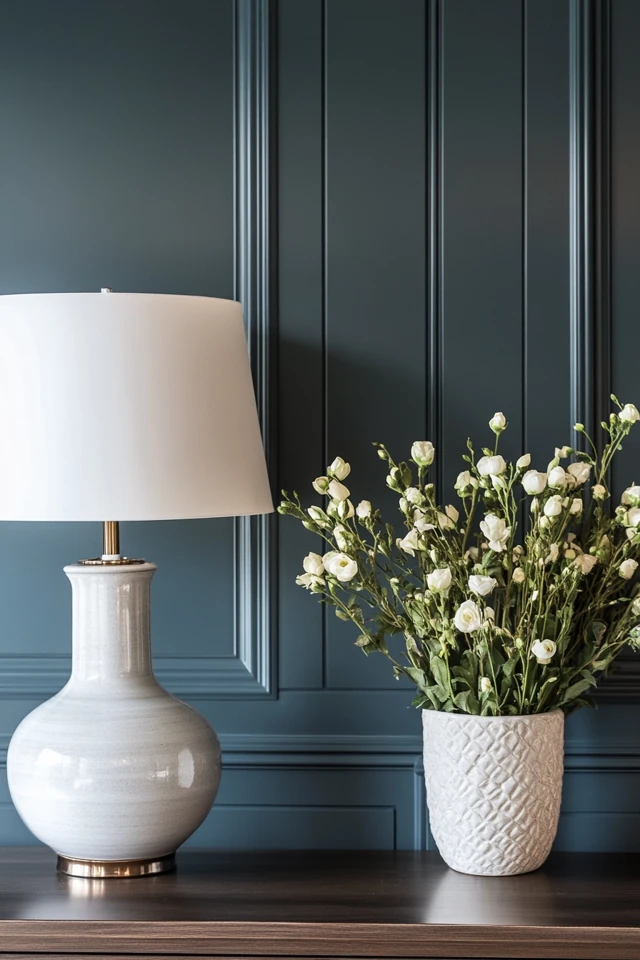
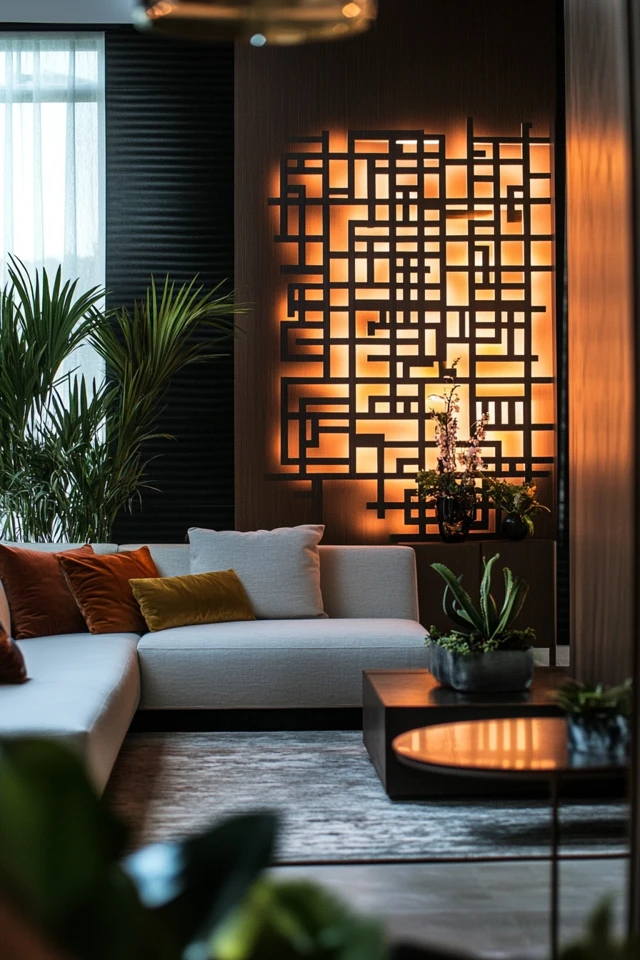
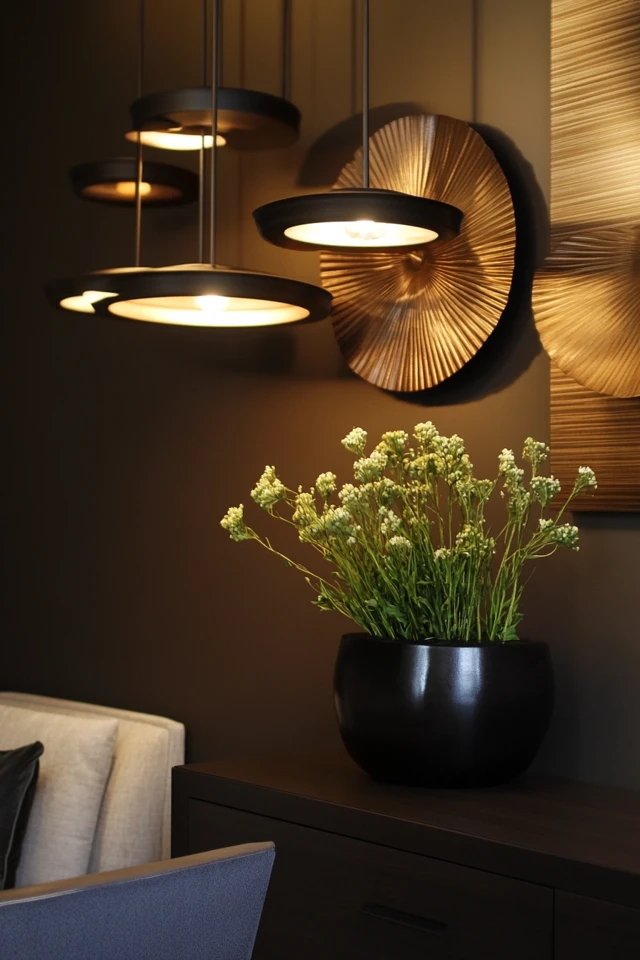

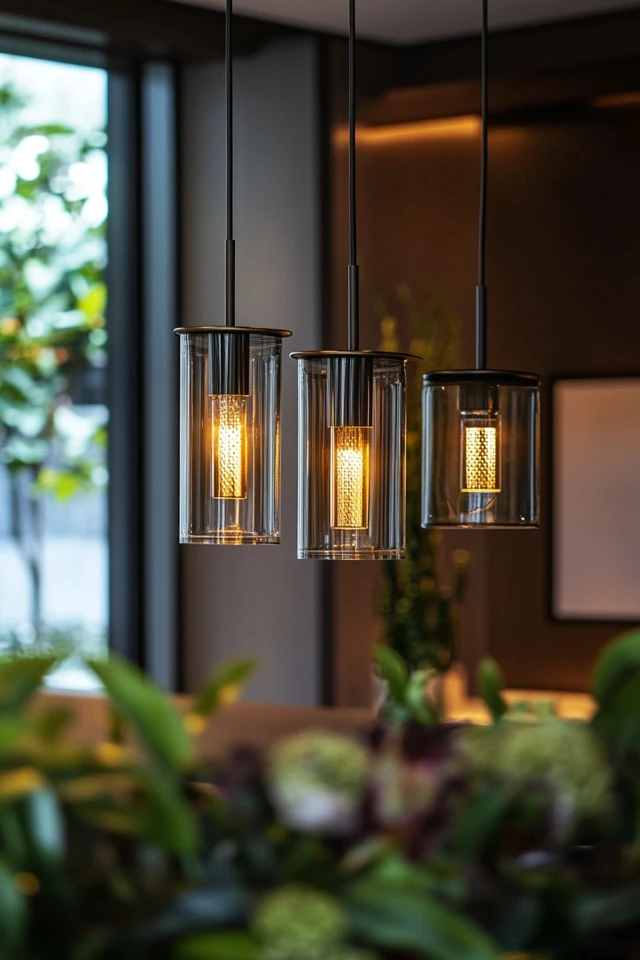
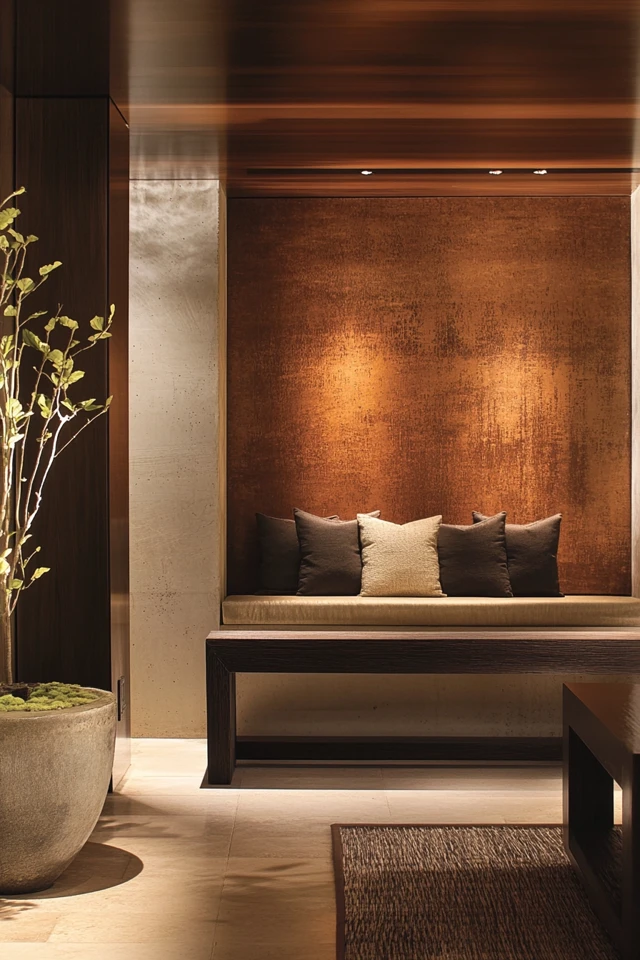
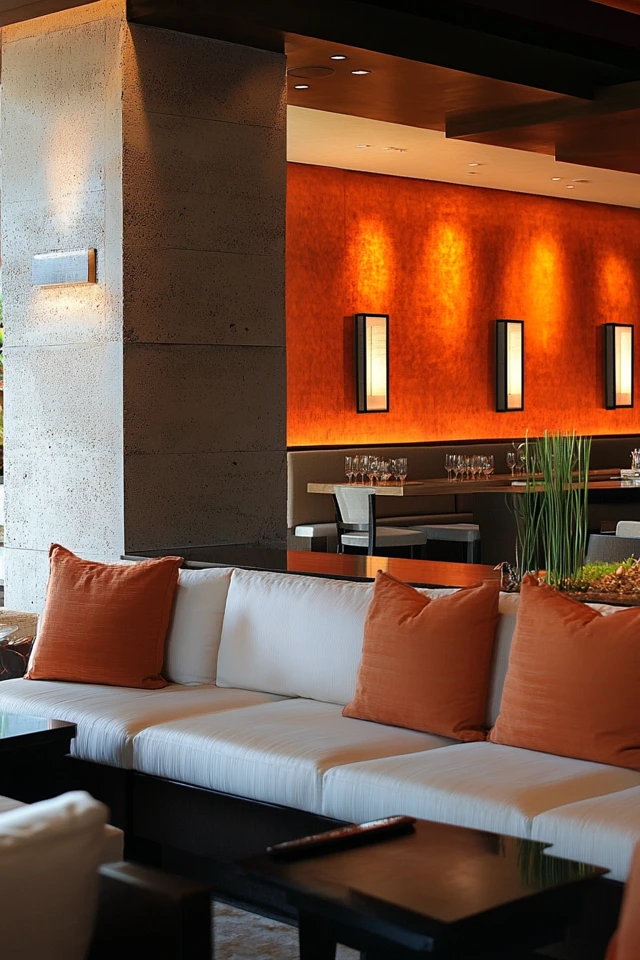
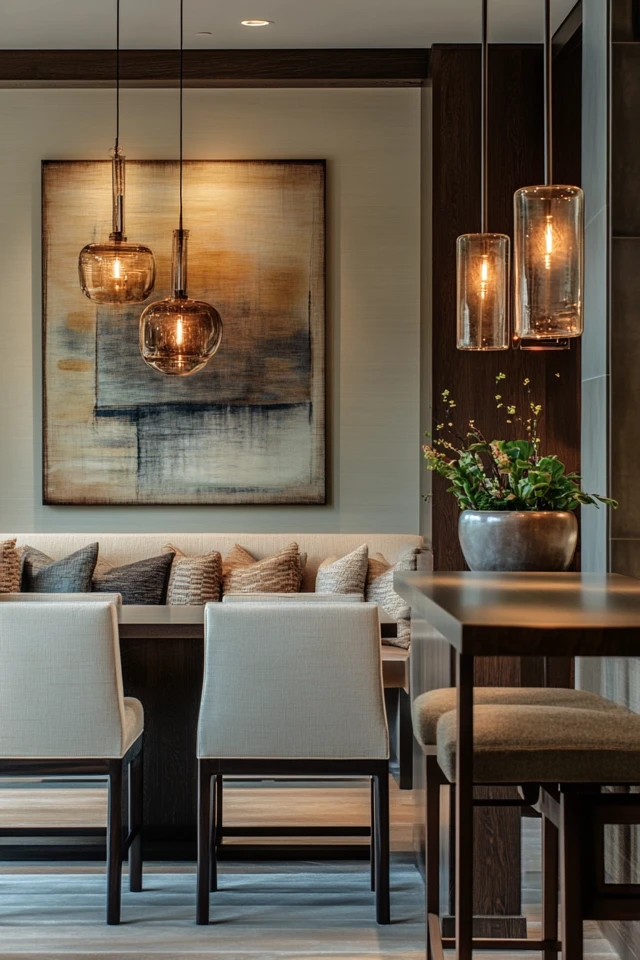
Why Layered Lighting Works
Layered lighting works because it addresses three essential aspects of lighting: ambient, task, and accent lighting. Here’s why it’s so effective:
- Creates Depth and Dimension: Multiple light sources add layers of light, making the room feel more dynamic and visually interesting.
- Enhances Functionality: Different types of lighting serve specific purposes, ensuring the space is well-lit for every activity.
- Sets the Mood: Layered lighting allows you to adjust the brightness and tone, creating the perfect ambiance for any occasion.
- Highlights Design Features: Accent lighting can draw attention to architectural details, artwork, or furniture, adding a touch of drama and sophistication.
- Adds Style: Lighting fixtures double as decor, adding character, elegance, or whimsy to the space.
Designers often compare layered lighting to a symphony, where each light source plays a role in creating a harmonious whole. Without these layers, a room can feel one-dimensional or overly utilitarian.
How to Curate Layered Lighting for Style and Function: Step-by-Step
1. Start With Ambient Lighting
- Ambient lighting provides the base layer of illumination:
- Use overhead fixtures like chandeliers, recessed lights, or flush-mount ceiling lights for even, general lighting.
- Ensure the light is diffused to avoid harsh shadows or glares.
- Ambient lighting sets the stage, creating a bright and functional environment.
- Example: In a living room, install a dimmable ceiling light to provide soft, evenly distributed light that works for everyday use.
2. Add Task Lighting for Specific Needs
- Task lighting focuses on areas where concentrated light is needed for activities:
- Use desk lamps, under-cabinet lights, or reading lamps for specific tasks like writing, cooking, or reading.
- Choose fixtures with adjustable brightness or directional beams for maximum versatility.
- Task lighting ensures practicality without sacrificing style.
- Example: In a kitchen, install LED strip lights under cabinets to illuminate countertops for food preparation.
3. Incorporate Accent Lighting for Drama and Depth
- Accent lighting highlights specific features or creates visual interest:
- Use wall sconces, picture lights, or spotlights to draw attention to artwork, architectural details, or textured walls.
- Include backlighting for shelves or behind TVs to add a subtle, ambient glow.
- Accent lighting adds depth, emphasizing the room’s design elements.
- Example: In a bedroom, install a pair of wall-mounted sconces to frame the bed while creating a soft, inviting glow.
4. Layer Lighting Types Strategically
- Combine ambient, task, and accent lighting in every room for a balanced effect:
- Ensure each light source serves a distinct purpose and enhances the overall design.
- Avoid overloading the space—three to five light sources per room are typically sufficient.
- Strategic layering ensures the space is functional, stylish, and adaptable.
- Example: In a dining room, use a chandelier for ambient light, wall sconces for accent lighting, and a pendant light above the buffet table for task lighting.
5. Use Dimmers for Flexibility
- Install dimmer switches to control the brightness of your lighting:
- Dimmers allow you to adjust the intensity for different moods or activities.
- Use dimmable LED bulbs for energy efficiency and versatility.
- Dimmers enhance the functionality and ambiance of your lighting design.
- Example: In a living room, dim the ceiling light for movie nights while keeping accent lights bright for added depth.
6. Choose the Right Fixtures for Style
- Lighting fixtures double as decor, so select pieces that complement your room’s style:
- For a modern look, choose sleek, minimalist designs with clean lines.
- For a traditional or rustic style, opt for chandeliers or lantern-inspired fixtures.
- Mix and match finishes like brass, black, or chrome for added character.
- Example: In a contemporary dining room, pair a geometric pendant light with understated wall sconces to create a cohesive yet striking look.
7. Pay Attention to Bulb Color Temperature
- Choose bulbs with the right color temperature to achieve your desired ambiance:
- Warm white (2700K–3000K): Best for bedrooms, living rooms, and dining areas for a cozy feel.
- Neutral white (3500K–4000K): Ideal for kitchens and bathrooms for a bright, functional light.
- Cool white (5000K+): Suited for workspaces or task-heavy areas.
- Matching color temperatures ensures consistency and harmony throughout the space.
- Example: In a home office, use neutral white light for task lighting and warm white for ambient light to maintain a balance between functionality and comfort.
8. Highlight Layers With Placement
- Placement is key to creating effective layers:
- Ensure ambient lights illuminate the entire space evenly.
- Position task lights where activities naturally occur, like desks or countertops.
- Use accent lights to highlight focal points, like artwork or architectural features.
- Thoughtful placement ensures every light source serves its purpose.
- Example: In a hallway, use recessed lighting for general illumination and wall sconces to accentuate framed photos.
9. Incorporate Natural Light as Part of the Design
- Maximize natural light to complement your layered lighting:
- Use sheer curtains or blinds to diffuse sunlight while maintaining privacy.
- Position mirrors to reflect natural light and brighten dark corners.
- Natural light enhances the overall lighting scheme, adding warmth and vibrancy.
- Example: In a dining room, position a mirror opposite a window to amplify daylight while layering it with a statement pendant light for evening use.
10. Consider Smart Lighting for Convenience
- Smart lighting systems offer enhanced control and customization:
- Use apps or voice commands to adjust brightness, color, and timing.
- Program different lighting “scenes” for activities like reading, entertaining, or relaxing.
- Smart lighting adds convenience while allowing you to fine-tune your design.
- Example: In a living room, set a “cozy evening” scene with dimmed ambient light, glowing accent lights, and warm task lighting.
FAQ
1. Do I need all three layers of lighting in every room?
While all three layers—ambient, task, and accent—are ideal, the specific needs depend on the room’s function. For example, a bathroom may focus on ambient and task lighting, while a living room benefits from all three.
2. How do I avoid over-lighting a room?
Stick to 3–5 light sources per room and use dimmers to adjust brightness as needed. Ensure each light source serves a distinct purpose.
3. Can I mix different lighting styles in one room?
Yes! Mixing styles can create visual interest, but ensure they complement the room’s overall aesthetic to maintain cohesion.
4. How do I layer lighting in a small space?
Opt for multifunctional fixtures like wall sconces with built-in task lights or pendant lights that double as statement pieces. Use mirrors to amplify light and make the space feel larger.
5. What’s the best way to highlight architectural features?
Use accent lighting like recessed spotlights, LED strips, or picture lights to draw attention to details like exposed beams, textured walls, or artwork.
Variations
- Minimalist Lighting: Use sleek fixtures with clean lines, and focus on soft ambient and subtle accent lighting.
- Industrial Style: Incorporate exposed bulbs, metal finishes, and pendant lights for a rugged, modern aesthetic.
- Classic Elegance: Use crystal chandeliers, ornate sconces, and warm light temperatures for a timeless look.
- Rustic Charm: Combine lantern-style fixtures, natural materials, and warm ambient light for a cozy feel.
- Bohemian Vibes: Layer string lights, patterned lampshades, and eclectic fixtures for a relaxed, artistic atmosphere.
How to Showcase It
- Living Rooms: Combine a central chandelier with floor lamps, table lamps, and spotlights for a cozy, layered effect.
- Bedrooms: Use a mix of overhead lights, bedside lamps, and soft sconces for a tranquil retreat.
- Kitchens: Pair pendant lights over the island with under-cabinet task lighting and recessed ambient lights.
- Bathrooms: Incorporate vanity lights, recessed ceiling lights, and accent lighting for a spa-like experience.
- Dining Rooms: Highlight the table with a pendant or chandelier, and use sconces or accent lights for added ambiance.
Occasions to Feature It
- Everyday Living: Layer lighting to ensure functionality and comfort for daily activities.
- Hosting Guests: Use dimmers and accent lights to create a warm, inviting atmosphere for entertaining.
- Seasonal Decor: Add festive accent lights or candles to enhance the mood during holidays.
- Workspaces: Use task and ambient lighting to create a productive and visually comfortable environment.
- Relaxation: Adjust layered lighting to set a soothing tone for unwinding at the end of the day.
Conclusion
Curating layered lighting is about blending function and style to create a space that works for every moment and mood. By combining ambient, task, and accent lighting, you can achieve a harmonious balance of practicality and elegance, transforming your home into a well-lit sanctuary.
Whether you’re enhancing a single room or updating your entire home, layering light offers endless opportunities for creativity and customization. So, experiment with different fixtures, placement, and brightness levels, and watch as your space comes to life with depth, warmth, and character!

